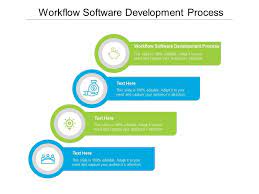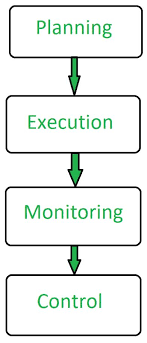Unlocking Success: The Role of a Software Engineering Consultant in Project Excellence
Software Engineering Consultant: The Key to Successful Projects
In today’s fast-paced technological landscape, businesses are constantly seeking ways to stay ahead of the competition. One crucial aspect that can make or break a project is software engineering. This is where a software engineering consultant comes into play.
What Does a Software Engineering Consultant Do?
A software engineering consultant is a professional who provides expert advice and guidance on software development projects. They have in-depth knowledge of programming languages, development methodologies, and industry best practices. Their role is to analyze project requirements, identify potential challenges, and recommend solutions to ensure the successful delivery of high-quality software.
The Benefits of Hiring a Software Engineering Consultant
There are several benefits to hiring a software engineering consultant for your project:
- Expertise: Consultants bring specialized skills and experience to the table, ensuring that your project is in capable hands.
- Efficiency: Their knowledge of efficient development practices can help streamline the project timeline and reduce costs.
- Risk Mitigation: Consultants can identify potential risks early on and implement strategies to mitigate them, reducing the likelihood of project delays or failures.
- Innovation: Consultants stay up-to-date with the latest technologies and trends, bringing fresh ideas and innovative solutions to your project.
How to Choose the Right Software Engineering Consultant
When selecting a software engineering consultant for your project, consider the following factors:
- Experience: Look for consultants with a proven track record of successful projects in your industry.
- Communication Skills: Effective communication is key to a successful collaboration. Ensure that the consultant can clearly convey complex technical concepts to stakeholders.
- Cultural Fit: Choose a consultant who aligns with your company culture and values for seamless integration into your team.
- Pricing: While cost is an important factor, prioritize value over price when selecting a consultant. Quality expertise may come at a higher cost but can yield better results in the long run.
In conclusion, a software engineering consultant plays a vital role in ensuring the success of software development projects. By leveraging their expertise and experience, businesses can overcome challenges, drive innovation, and achieve their goals in today’s competitive market.
Maximize Success with a Software Engineering Consultant: 6 Key Benefits
- Specialized expertise in software development
- Efficient project management and timeline optimization
- Risk mitigation through early identification and resolution of issues
- Innovative solutions based on the latest technologies and trends
- Objective perspective and fresh insights into project challenges
- Customized strategies tailored to meet specific project requirements
7 Drawbacks of Hiring a Software Engineering Consultant: Costs, Compatibility, and More
- Costly services may not fit all budgets.
- Dependency on external expertise may hinder internal skill development.
- Potential conflicts with in-house development teams or existing processes.
- Difficulty in finding a consultant with the right expertise for specific project requirements.
- Communication challenges due to technical jargon and complex concepts.
- Risk of consultants not fully understanding the business context or industry nuances.
- Limited availability leading to potential delays in project timelines.
Specialized expertise in software development
Having specialized expertise in software development, a software engineering consultant brings a deep understanding of programming languages, development methodologies, and industry best practices to the table. This specialized knowledge allows them to tackle complex technical challenges with precision and efficiency, ensuring that projects are executed with high quality and adherence to industry standards. By leveraging their expertise, software engineering consultants can provide valuable insights, innovative solutions, and guidance that lead to successful project outcomes.
Efficient project management and timeline optimization
Efficient project management and timeline optimization are key advantages of hiring a software engineering consultant. With their expertise in development methodologies and best practices, consultants can streamline project workflows, allocate resources effectively, and identify potential bottlenecks early on. By optimizing timelines and ensuring efficient project management, software engineering consultants help businesses meet deadlines, reduce costs, and deliver high-quality software solutions in a timely manner.
Risk mitigation through early identification and resolution of issues
One significant benefit of hiring a software engineering consultant is their ability to mitigate risks by promptly identifying and resolving issues in the early stages of a project. With their expertise and experience, consultants can proactively assess potential challenges, such as technical complexities or development roadblocks, before they escalate into major problems. By addressing these issues upfront, consultants help minimize the risk of project delays, cost overruns, or quality compromises, ultimately ensuring a smoother and more successful software development process.
Innovative solutions based on the latest technologies and trends
Software engineering consultants offer a valuable pro by providing innovative solutions that are built on the foundation of the latest technologies and trends. By staying abreast of advancements in the tech industry, consultants can offer cutting-edge solutions that help businesses stay competitive and relevant in today’s rapidly evolving digital landscape. This proactive approach ensures that projects are developed using the most efficient and effective tools available, ultimately leading to enhanced performance, scalability, and user experience.
Objective perspective and fresh insights into project challenges
A significant advantage of hiring a software engineering consultant is their ability to provide an objective perspective and fresh insights into project challenges. With their expertise and experience in various projects, consultants can offer a new viewpoint on existing issues, identify potential roadblocks that may have been overlooked, and propose innovative solutions to overcome obstacles. This objective approach helps teams navigate complexities more effectively and ensures that projects stay on track towards successful completion.
Customized strategies tailored to meet specific project requirements
Software engineering consultants offer a valuable pro by providing customized strategies tailored to meet specific project requirements. By thoroughly analyzing the unique needs and goals of a project, consultants can design tailored solutions that address specific challenges and maximize efficiency. This personalized approach ensures that the software development process is aligned with the project’s objectives, leading to successful outcomes and enhanced project delivery.
Costly services may not fit all budgets.
One significant drawback of hiring a software engineering consultant is the potential cost associated with their services, which may not align with all budgets. The expertise and specialized skills offered by consultants often come at a premium price, making it challenging for smaller businesses or individuals with limited financial resources to afford their services. This cost barrier can restrict access to valuable consultancy support, limiting the ability of some organizations to benefit from the insights and guidance that software engineering consultants can provide. As a result, finding cost-effective alternatives or carefully evaluating the return on investment becomes crucial considerations for those seeking consultancy assistance in the software engineering realm.
Dependency on external expertise may hinder internal skill development.
One notable con of relying heavily on software engineering consultants is the potential hindrance to the development of internal skills within an organization. When companies consistently depend on external expertise for their software engineering projects, there is a risk that internal team members may not have the opportunity to grow and enhance their own skills. This dependency can lead to a lack of knowledge transfer and hands-on learning experiences, limiting the long-term growth and proficiency of the internal team. It is essential for organizations to strike a balance between utilizing external consultants and investing in the continuous development of their internal talent to ensure sustainable success in software engineering endeavors.
Potential conflicts with in-house development teams or existing processes.
One significant con of hiring a software engineering consultant is the potential conflicts that may arise with in-house development teams or existing processes within the organization. Introducing an external consultant into the mix can sometimes lead to friction or resistance from internal team members who may feel threatened or uneasy about changes to their established workflows. Additionally, consultants may propose new methodologies or technologies that contradict existing processes, causing disruptions and challenges in alignment. Managing these conflicts effectively requires clear communication, collaboration, and a shared commitment to achieving project goals while balancing the perspectives of both internal and external stakeholders.
Difficulty in finding a consultant with the right expertise for specific project requirements.
One significant challenge when considering a software engineering consultant is the difficulty in finding a professional with the precise expertise required for specific project requirements. The vast and evolving landscape of software development can make it challenging to identify consultants who possess the exact skill set, experience, and knowledge needed to address unique project demands effectively. This mismatch in expertise can lead to potential delays, misunderstandings, and suboptimal solutions, highlighting the importance of thorough research and evaluation when selecting a consultant to ensure alignment with project objectives and success.
Communication challenges due to technical jargon and complex concepts.
One significant drawback of hiring a software engineering consultant is the potential communication challenges that may arise due to the use of technical jargon and complex concepts. The consultant’s deep expertise in software development may lead to difficulties in effectively conveying information to non-technical team members or clients. This can result in misunderstandings, delays in decision-making, and ultimately impact the project’s progress. Clear and concise communication is essential for successful collaboration, and overcoming these challenges requires the consultant to adapt their language and explanations to ensure everyone involved understands the project’s complexities and requirements.
Risk of consultants not fully understanding the business context or industry nuances.
One significant drawback of hiring a software engineering consultant is the risk that they may not fully grasp the business context or industry nuances of the client’s specific domain. Without a deep understanding of the unique challenges, requirements, and intricacies of the business environment, consultants may struggle to provide tailored solutions that align with the client’s strategic objectives. This lack of contextual awareness can lead to misaligned recommendations, inefficient processes, and ultimately hinder the successful implementation of software projects within the organization. It is essential for businesses to ensure effective communication and knowledge transfer between consultants and internal stakeholders to mitigate this risk and maximize the value derived from external expertise.
Limited availability leading to potential delays in project timelines.
One significant drawback of hiring a software engineering consultant is their limited availability, which can potentially result in delays in project timelines. Due to their expertise being in high demand, consultants may have other commitments that could impact their ability to dedicate sufficient time to your project. This limitation in availability can lead to extended project timelines, causing frustration and potential setbacks for businesses aiming to meet tight deadlines. It is crucial for organizations to carefully consider the consultant’s availability and workload management strategies before engaging their services to mitigate the risk of project delays.









